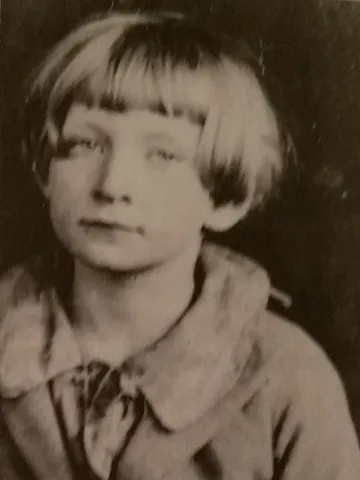Remembering Life on Powell River before Norris Dam

In the early 1930s, before a large dam was built beneath the forks of the Clinch and Powell Rivers, a little girl of early pioneer ancestry lived in a white two-story house across the Powell River from the mouth of Cedar Creek. She was born there, as had been her uncle, who also lived there with her parents, maternal grandmother, three younger siblings and an older cousin. Their home was on a large farm encircled by a bend of the Powell River on three sides.
In the spring of the year, the little girl loved to watch the river as it rose upon its banks. On these same banks and river bottoms, Union soldiers had trained for the Civil War. The little girl learned many treasured stories from her uncle of soldiers long gone from the training field. Her grandmother, also born on the river, had first hand memories of the war.
The farm house had a small older wing on the rear that included the kitchen, referred to by the family as the Little House. In the winter, a huge log placed in the fireplace kept the kitchen warm. Sitting around the fire, in the kitchen illuminated by kerosene lamps, the family read the Bible, Sunday School lessons, The Knoxville Journal, Progressive Farmer and whatever textbooks the children were studying from in school.
While her mother was busy cooking, or doing other things for the family, the little girl would help her grandmother rock the younger children in a wooden cradle. The cradle had heavy rockers and sat in front of a window by the hearth in the kitchen.
On Sundays, the little girl and her sister would trail their father on a farm horse, named Maude, up the side of Cedar Creek and the Sugar Hollow Branch to church. Each time the trail would cross the branch, Maude would lower her head for a drink potentially plunging the girls, it seemed, into the stream below.
The sisters loved to attend Sunday School at Sugar Hollow. Maude Ridenour, a Campbell County school teacher, was their teacher. Each lesson was on a card with a picture. These were kept in a box at home after each lesson has been gone over a number of times. Relocated as a result of the formation of Norris Reservoir, the congregation is known today as Coolidge First Baptist.
One hot August afternoon, the little girl's father came home in the farm wagon with a John C. Winton primer. Soon she was carrying the little book with her to a nearby one room school. The school closed, due to low enrollment, after two weeks and she began to ride the bus to a much larger school at Demory. No doubt many of the parents of the children who arrived by bus worried about their children being so far from their care. Fortunately, Mrs. Jane Boshears Morton, who lived within site of the school, was known to be generous with her time tending to the needs of sick children. Perhaps she ran the first school clinic in Campbell County right out of her home.
Although the little girl's family did not have electricity while living on Powell River, they did have telephone service. Should the party line be out of order for any reason, Andy Heatherly, proprietor of the A.J. Heatherly General Store would take messages from his telephone at the store and deliver them personally throughout the neighborhood in his Model T Ford.
These wonderful happy early childhood years on Powell River came to an end one morning in early December of 1934 when the little girl rode in the cab of a moving truck with her grandmother and three younger siblings to their new home closer to town. The gingerbread style house would be home to her parents for over fifty years.
Written partially in her own words, the little girl in the story was my mother Nadine Heatherly Stephens (1925-2002). More than eighty years have come and gone since hers like so many additional families were dislocated in advance of rising waters behind Norris Dam before the gates were closed on March 4,1936.
The spine of the ridge that ran down the center of the farm, where she was born, is visible, to the left, year-round from the opposite side of the lake at the tip of Heatherly's Point and is known today as Spangler Point or Point 10.
- Log in to post comments
A similar story
https://www.scribd.com/document/162642321/Memories-Along-Clinch-River